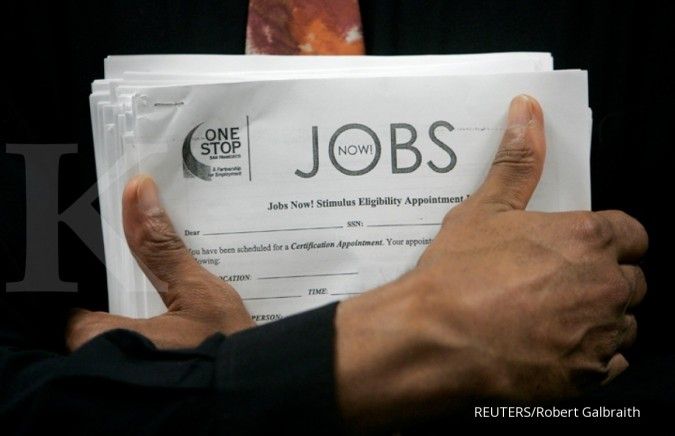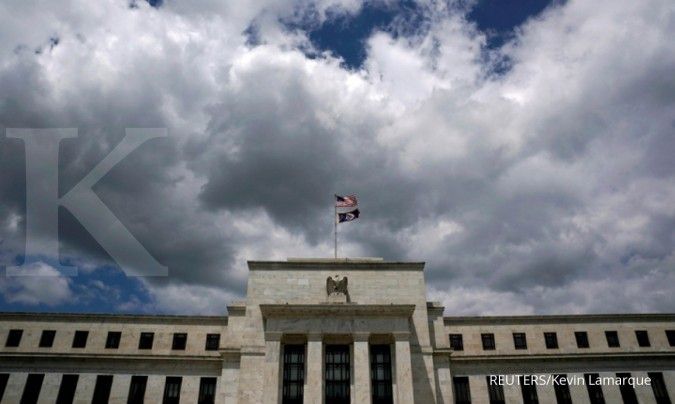KONTAN.CO.ID - WASHINGTON. U.S. employers hired far more workers than expected in March and continued to lift wages at a steady clip, suggesting the economy ended the first quarter on solid ground and potentially delaying anticipated Federal Reserve interest rate cuts this year. The Labor Department's closely watched employment report on Friday also showed the unemployment rate fell to 3.8% last month from 3.9% in February. The decline in the jobless rate reflected a sharp rebound in household employment, which more than absorbed the 469,000 people who joined the labor force. The U.S. economy is outshining its global peers even though the Fed has raised rates by 525 basis points since March 2022 to dampen inflation. Economists say most businesses locked in lower borrowing costs prior to the U.S. central bank's tightening cycle, providing some insulation from higher borrowing costs and allowing them to keep their workers. The labor market is also benefiting from a rise in immigration over the past year.
"The economy seems to have adapted to a new normal of higher rates and today's data does not increase the urgency for the Fed to make cuts," said Eric Merlis, managing director and co-head of global markets at Citizens Bank. Nonfarm payrolls increased by 303,000 jobs last month, the Labor Department's Bureau of Labor Statistics said. The economy added 22,000 more jobs than previously estimated in January and February. Economists polled by Reuters had forecast 200,000 jobs in March, with estimates ranging from 150,000 to 250,000.
Read Also: Gold Bulls Eye More Record Highs Despite Lightning Gains The nearly broad increase in employment last month was led by the healthcare sector, which added 72,000 jobs, spread across ambulatory services, hospitals as well as nursing and residential care facilities. Government payrolls increased by 71,000 jobs, boosted by local and federal government hiring. The construction sector added 39,000 jobs, about double the average monthly gain of 19,000 over the last 12 months. Construction is among the sectors sensitive to interest rates that are benefiting from easing financial conditions. Leisure and hospitality payrolls rose 49,000, returning employment to its pre-pandemic level. There were also increases in employment in the social assistance, retail and wholesale trade sectors. But manufacturing added no jobs last month. Average hourly earnings rose 0.3% in March after gaining 0.2% in the prior month as some weather-related distortions faded. The annual increase in wages slowed to a still high 4.1% in March from 4.3% in February. Wage growth in a 3%-3.5% range is seen as consistent with the Fed's 2% inflation target. Inflation by most measures is running above that target. The average workweek rebounded to 34.4 hours last month, from 34.3 hours in February. Financial markets have dialed back their expectations of a June rate cut and now see a roughly 50% chance. Fed Chair Jerome Powell reiterated on Wednesday that the central bank was in no rush to reduce borrowing costs after leaving its policy rate unchanged in the current 5.25%-5.50% range last month. U.S. stocks opened higher. The dollar rose against a basket of currencies. U.S. Treasury prices fell. Read Also
: World Food Prices Rebound From Three-Year Low, Says UN Agency ROBUST HOUSEHOLD EMPLOYMENT The strong job gains last month were mirrored in the smaller and volatile household survey, from which the jobless rate is derived. Household employment rebounded by 498,000 jobs.
The two surveys had diverged sharply in recent months. Economists attributed the divergence to an increase in labor supply through immigration that was not yet being captured in the household survey. The Congressional Budget Office recently upgraded its immigration estimate for 2023 to 3.3 million from 1.0 million. The BLS uses U.S. Census population estimates and will likely update the population flows in its annual benchmark revision next year. Researchers at the Brookings Institution in Washington estimated the new CBO projections suggested the labor market in 2023 could accommodate employment growth of 160,000 to 230,000 per month, compared to previous projections of 60,000 to 130,000, without adding pressure to wages and price inflation. Economists said this could allow the Fed to let the economy run a little bit stronger before cutting rates. The unemployment rate has remained below 4% for 26 straight months, the longest such stretch since the late 1960s.






